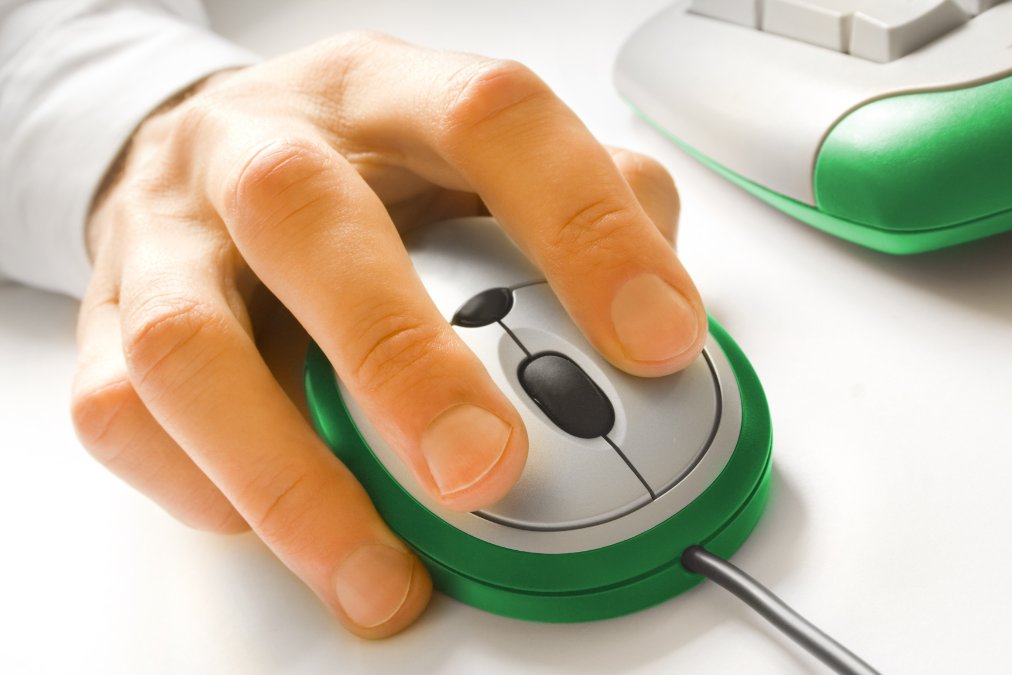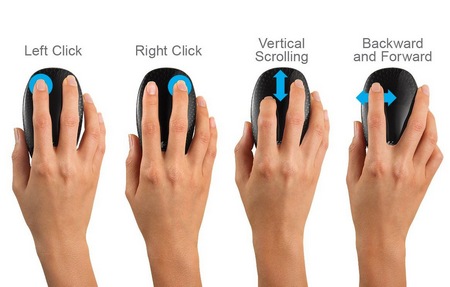KEYBOARDING AND MOUSE SKILLS
Keyboard
Keyboard is the most common and very popular input device which helps to input data to the computer. The layout of the keyboard is like that of traditional typewriter, although there are some additional keys provided for performing additional functions.

Keyboards are of two sizes 84 keys or 101/102 keys, but now keyboards with 104 keys or 108 keys are also available for Windows and Internet.
Learn how to type Properly:
Fingers
motion

Don't look at the keys when you type. Just slide your fingers around until they find the home row marking.
Limit your hand and finger movement only to what is necessary to press a specific key. Keep your hands and fingers close to the base position. This improves typing speed and reduces stress on the hands.
Pay attention to ring fingers and little fingers, since they are considerably underdeveloped.
Lesson 1 Left Hand Practice
In the first lesson you will only practice with fingers of your left hand.
Place your fingers on the keyboard as described below.
| Pinky Finger..... | A |
| Ring Finger..... | S |
| Middle Finger...... | D |
| Index Finger.... | F |
| Thumb....... | Space |
lesson:2 Right Hand Practice
Place your right hand fingers on the keyboard as described below.
| Index Finger.... | J |
| Middle Finger...... | K |
| Ring Finger..... | L |
| Pinky Finger..... | ; (Semi-Colon) |
| Thumb....... | Space |
Lesson 3 Left and Right Hands Practice
Using a mouse
There are lots of different styles of mouse, but most have a left and a right button.

You use your mouse to move the cursor around the screen. The cursor changes, depending on what you are doing on the computer. As an arrow you use it for moving and selecting things, as a hand for clicking on links when you are on the internet and it becomes an hourglass when you are waiting for the computer to do something.
Single clicking
You single click with the left mouse button to select things. Just quickly left click and then let go of the button.
Double clicking
You double click with the left mouse button to open things, such as a folder. You need to double click quickly, think about the ‘knock, knock’ you do on a door.
Drag and drop
Drag and drop is when you move something from one place to another.
First select the item with the left mouse button and keep the button pressed down. Then move the mouse and the item on screen will move with the cursor. When you have the cursor and item in the position you want, release the left mouse button.
The item will now be dropped to where the cursor is positioned on the screen.
You use drag and drop to move things around your computer, such as files between folders.
Right button
If you ever accidently click the right mouse button, a list of computer commands will appear. To remove the list just move the mouse and single click the left button.
Laptop trackpad or touchpad
Laptops can have a built in mouse within the keyboard. This is operated by finger touch. This specialised surface is used instead of a mouse and needs only very short finger movements to move the cursor across the display screen.
This is how you position your fingers on the computer mouse.


Introduction to Manipulative keys
The Shift key is a modifier key on a keyboard; it is used to type capital letters and other alternate "upper" characters. There are two shift keys on the keyboard. One on the left (below the caps Lock key) and right sides (below the enter key).
The Tab key on a keyboard is used to move the cursor to the next "tab stop". Tab is the abbreviation for Tabulator. To tabulate, (tabulating) means to put something into a table or chart.
Backspace key moves the cursor backward one character space. It can also be used to delete the character to the left of the cursor. It is particularly useful for correcting spelling mistakes.
The enter key is also known as the Return key, it is used to move a cursor to the next line or execute a command or operation. You can find two enter keys on most keyboards, one on the main key pad and another on the numerical keypad.
Sometimes displayed as INS on the keyboard, the Insert key is a key allows text to be inserted. When insert is enabled, it allows text to be typed over existing text in a document.



Comments
Post a Comment